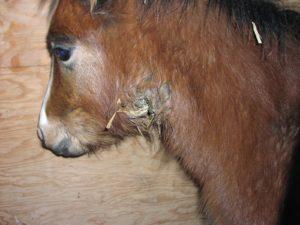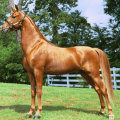How much can a horse weigh on average and how to determine mass, world records
Horse breeders need to know how much a horse actually weighs in order to compare with the standard. Weight deviations can mean either a lack of care, or a disproportionate physical effort to the diet received, or health problems. Each age and breed of horses has its own weight gradation. To determine the body weight of animals, grooms use special techniques.
What determines the weight of a horse?
Horse weight indicators are determined based on the breed standard and the degree of fatness. The height and weight of animals are closely related and affect the body type. The development of skeleton and muscle tissue is judged by fatness.
Draft horses are the tallest and heaviest horses in the world. The pulling force directly depends on the height and weight of the animals. Riding and light-harnessing breeds have a more graceful skeleton structure. Their muscular corset must be harmoniously developed. Excessive weight load will require additional effort when moving the animal. Underweight will affect horse endurance.
Horse nutrition is the most important aspect of maintenance and care. The volume and calorie content are determined based on the economic purpose of the animals. On average, the total weight of the daily feed including all additives should be between 1.8% and 2% of horse weight.
The weight of animals is monitored in dynamics in order to follow the physical development of horses throughout their life.
Main categories
In horse breeding, a weight classification is adopted, which is directly related to the characteristics of the breeds.

There are 3 groups in total:
- easy;
- medium;
- heavy.
The first includes horses weighing up to 400, the second - from 401 to 600, the third - over 601 kilograms. The graduation applies to sexually mature mares and stallions. Observing the weight in dynamics allows you to regulate the load and the type of exercise of the horse. In adults, it should not change when riding and harness breeds reach 5 years of age, in heavy haulers - 7 years.
The body condition of any breed is judged on the Hennecke scale:
- Exhausted.
- Very thin.
- Thin.
- Moderately thin.
- Moderate.
- Moderately plump.
- Plump.
- Thick.
- Very thick.

The condition is determined visually and by palpation.
Unsatisfactory body condition
According to the description of the 1-2-3 category of the Hennecke scale, this is "emaciated", "very thin", "thin" horse. In the first two categories, adipose tissue is completely absent, the bones are covered with skin and a small muscle layer.In a "thin" body fat appears on the neck, withers and shoulders.
If for some reason the horse has lost 50% of its weight, then it will no longer be able to restore it and must be discarded. With a loss of 30% of its weight, the animal can be rehabilitated, but this will require significant time and effort from the horse breeder. For young horses, there are age weight guidelines that breeders adhere to so that young horses develop correctly.
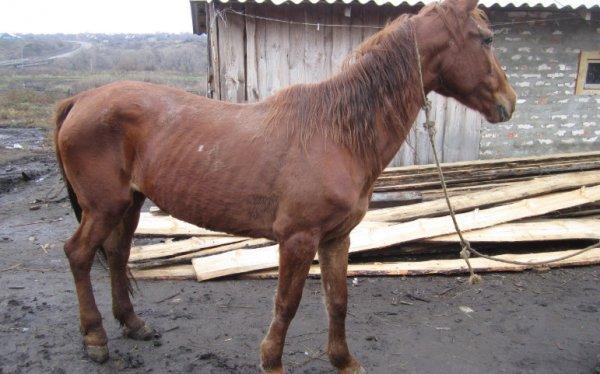
Sports
For sport horses, the ideal body condition is moderately thin and well-fed. Moderately thin means the ridge and rib contours are visible. The withers, shoulders and neck do not appear thin.
"Moderate" fatness is when the spine and ribs are not visible, but the ribs are felt when stroking. Withers, shoulders, neck are rounded or smooth.
Working
The working group includes animals with a well-developed muscular corset, with fat layers on the withers, neck, between the ribs. According to the Hennecke assessment scale, body condition is assessed as "moderate".
Factory
For reproduction of the breed, animals are selected with an ideal conformation and high sexual activity. The stallions with “moderate” and “moderately well-fed” body condition indicators have the best reproductive performance. Horses of this category can be transferred to the working group, as they maintain excellent physical condition.
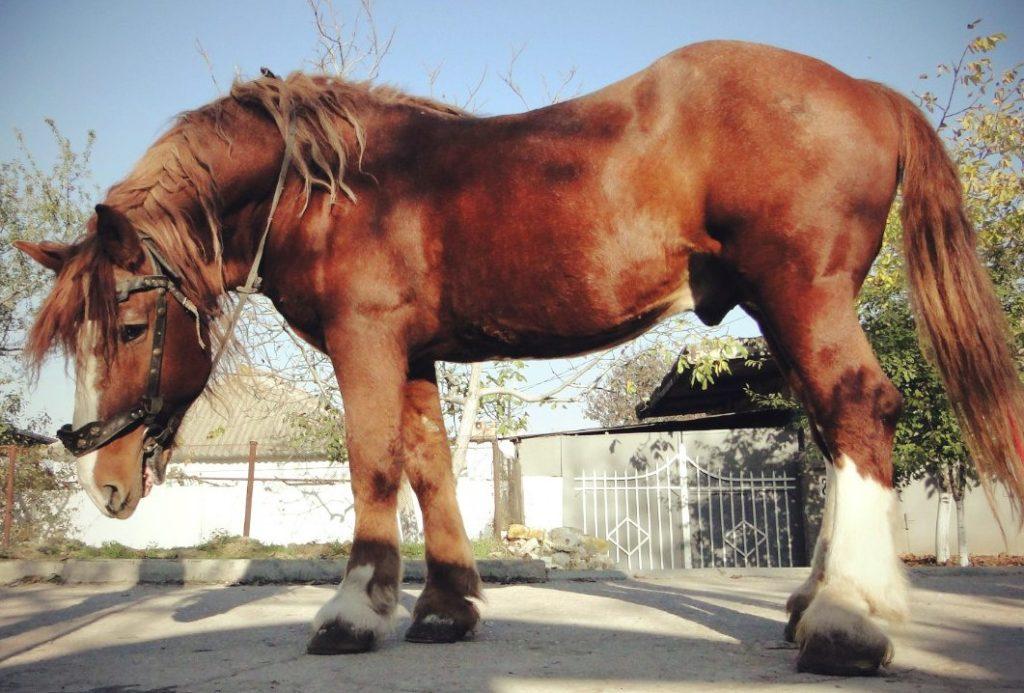
Exhibition
For the demonstration of the breed, the best representatives are selected with a beautiful and proportional skeleton. The horses are fattened so that the muscle relief has smoother forms due to subcutaneous fat, and the coat is a bright shade.
The evaluation category is “well-fed”. Show animals are not suitable for competitions due to insufficient muscle mass.
Weight fluctuations depending on horse breed
The breed of the horse determines its purpose. Heavyweights will lose speed to lighter horses, but will have an advantage in endurance and carrying capacity.
Brabancons
Belgian heavy truck. The breed was finally formed at the end of the 19th century. The average height at the withers is 170 centimeters, the average weight is 900 kilograms. Massive, muscular horses are capable of moving a load 3-4 times their own weight.
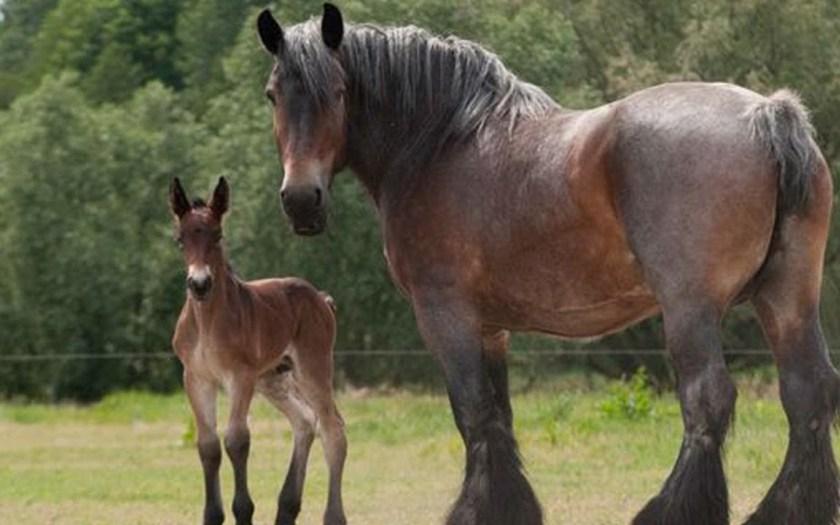
Shire
The breed was bred in England at the end of the 18th century for military needs. Subsequently, muscular and very strong horses began to be used as the main labor force in agriculture and industry. The height at the withers is, on average, 170 centimeters (165 to 176). Weight can reach 1200 kilograms.
Heavy trucks
Brabancons and Shires were among the forefathers of other heavyweight breeds:
- Scottish;
- Irish;
- Vladimirsky;
- Bolognese;
- Australian.
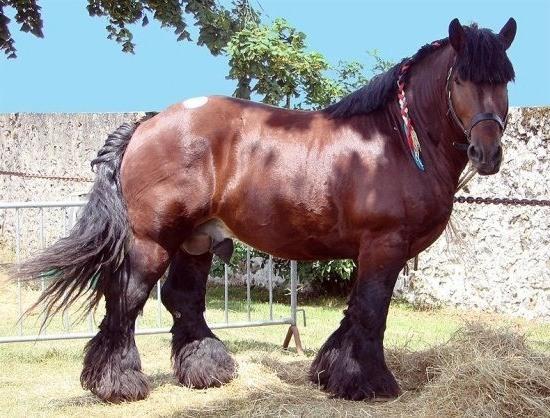
French Percherons have an admixture of the blood of Arabian horses. The origin of the English suffolk is unknown. All heavy trucks are strong, massive, strong horses with a minimum weight of 700 kilograms.
Budennovsk
A versatile sports horse breed.
Characteristic features of the Budyonnovsky horse:
- average height at the withers - up to 165 centimeters;
- powerful croup;
- Long neck;
- well developed, muscular legs.
The weight of an adult horse is from 400 to 600 kilograms.
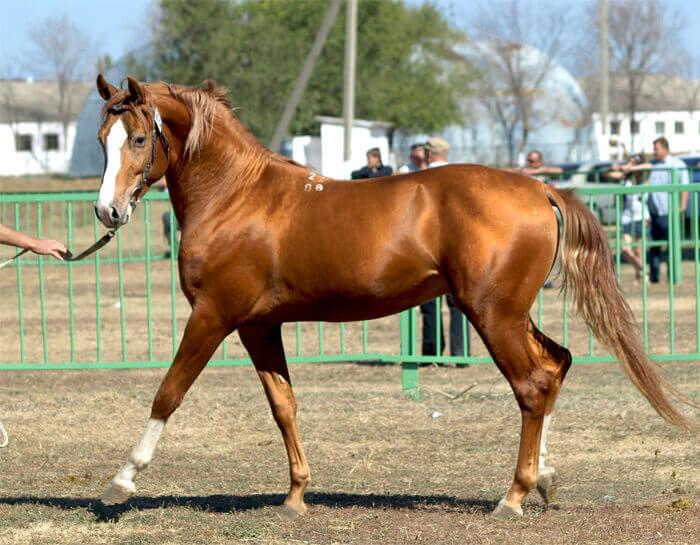
Trotters
Light harness breeds are designed for long runs. Trotters are dimensional horses. At the withers, they can reach 170 centimeters, in length - 160 centimeters, chest coverage - 180 centimeters. Horse weight - from 500 to 550 kilograms.
Pony
Ponies are a special kind of horse that includes 2 subspecies. The first was formed under natural conditions with a lack of food resources and severe climatic conditions. These animals are 1.5-2 times shorter and lighter than ordinary horses. In physique, such ponies resemble a smaller copy of heavy trucks. Horses are used in tourism and entertainment. The tallest are Scottish ponies. They reach 107 centimeters at the withers, and 200 kilograms in weight.
The second subspecies is dwarf horses, bred by humans for decorative purposes. The smallest breed is the Falabella. A reduced copy of a horse does not exceed 75 centimeters (minimum - 40 centimeters) and weighs from 20 to 60 kilograms. Intelligent and easy to train animals are used as companions, in particular, guide for the blind.

How to calculate the mass of an animal
To determine the live weight of a horse, body measurements in centimeters and calculation formulas are used, since the use of weights requires significant material costs.
Making measurements
Parameters required for calculations:
- height at the withers;
- girth in the chest;
- horse length.
For accurate results, the horse is placed on a firm and level ground. Before starting measurements, the animal must be soothed by gentle stroking on the croup. Measuring bars and tapes are used as a measuring tool.

When determining the height at the withers, the lower end of the stick is placed against the left front hoof at the outer heel. The cross bar is lowered to the highest point of the withers. When measuring the girth of the chest, the tape is pulled tightly along the trajectory of the girth, touching the corners of the scapula. The oblique length of the body is measured together with a measuring stick: from the shoulder-scapular joint to the ischial bone. For self-control, the measurement is done twice.
Applicable formulas for calculations
The advantage of the calculated indicators is in their availability and simplicity. The disadvantage is the approximate result: they are less accurate than weighing a horse on a scale.
Calculating horse weight through height
The height at the withers is multiplied by a factor:
- 2.58 - for working horses in the category "thick";
- 2.33 - for working horses with a "moderate" / "moderately well-fed" assessment;
- 2.1 - for "thin" working horses;
- 3.39 - for "thick" heavy trucks;
- 3.1 - for "thin" heavy trucks.
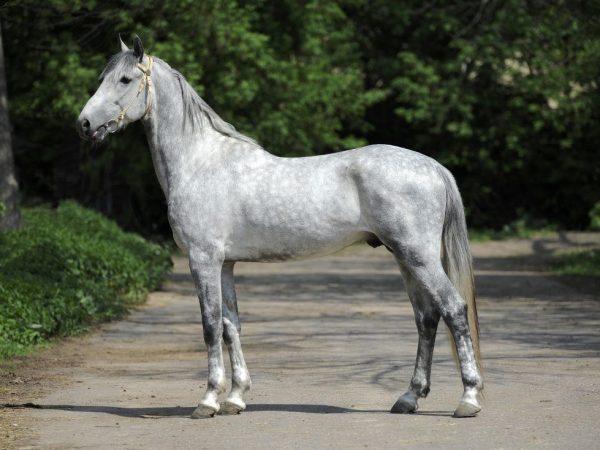
The complexity of the calculation lies in the correct choice of the coefficient.
Dyurst
The calculation uses the chest circumference and coefficients, the product of which gives the approximate weight of the horse. Coefficients: 3.5 - for heavy breed; 3.1 - medium; 2.7 - light.
Matorina
The formula for calculating the weight of a horse: the chest volume is increased 6 times and the numerical value 620 is subtracted.
Platonov and Dzeverin
The mass of a horse is defined as the product of height and chest girth.
World records
In terms of weight and height, heavy draft horses and ponies stand out from all horse breeds.

Largest horse
The maximum weight and height was recorded at the end of the 19th century for Shire Samson: 1574 kilograms and 219 centimeters, respectively. The modern record holder is inferior to him by more than 100 kilograms.
The smallest horse
Argentinean falabella does not exceed 36 centimeters in height and weigh up to 9 kilograms.

